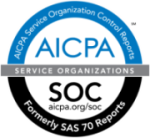It should come as no surprise that we’re fans of technology around here. And one of my personal favorite podcasts, Science Friday, has a series called Science Friday Spoonfuls: contemporary science stories tailored for classroom use. While scrolling through various stories about star-nosed moles, piles of feathers and snarge, and untied shoelaces, I came across one that immediately seemed applicable to tax prep: “Why Take Apart Your Clicky (Retractable Ball) Pen?”
This lesson is part of SciFri’s “Break It Down” project, which, back in October 2016, challenged listeners to take apart complex devices to learn more about them. Examples ranged from keyboards to floppy disks, but the pen-disassembly lesson perhaps best exemplifies the main idea: take what seems commonplace and learn something new about it by seeing how the constituent parts fit together.
Tax preparation, like the pen, is a fairly ubiquitous part of American life. Right after the ball drops in Times Square, taxpayers start turning their attention to Forms W-2, 1040, and 1099 – all while cracking jokes about the “two sure things in life.” For tax professionals, filing season means (among other things) making sure their PTIN is current, brushing up on changes to tax law, and getting the office ready to handle the tidal wave of clients. And it’s that last point that I want to discuss.
Whenever you’re training seasonal workers to use tax prep software and understand the general workflow of the office, you probably go through a meticulously planned set of steps that, to date, have provided the best efficiency for your office. While you often hear the phrase “if it ain’t broke, don’t fix it,” there are still times when it’s a good idea to take a moment to break down your workflow and examine each step. And sometimes it’s a good idea to make tweaks to improve the overall process.
Client document organization and data entry are two steps in tax prep workflow that could use a second look. Both tend to take a considerable amount of time, both tend to be handed off to temporary staff, and both tend to be an efficiency bottleneck. If you shorten the amount of time needed to complete these tasks – removing the need for extra seasonal staff to handle these duties – you can process more clients for less money.
That’s exactly what GruntWorx’s Organize and Populate services do.
Organize takes scanned client documents and produces a bookmarked, labeled, sortable PDF that you can use for your records and provide to clients as a deliverable, and Populate takes information from those scanned documents and imports it directly into leading tax software packages. If you have a client with a lengthy brokerage statement, just use GruntWorx Trades to get a spreadsheet that you can use to import that information into your prep software.
And if you sign up for a webinar today, you can learn more about how GruntWorx services can improve your workflow.







